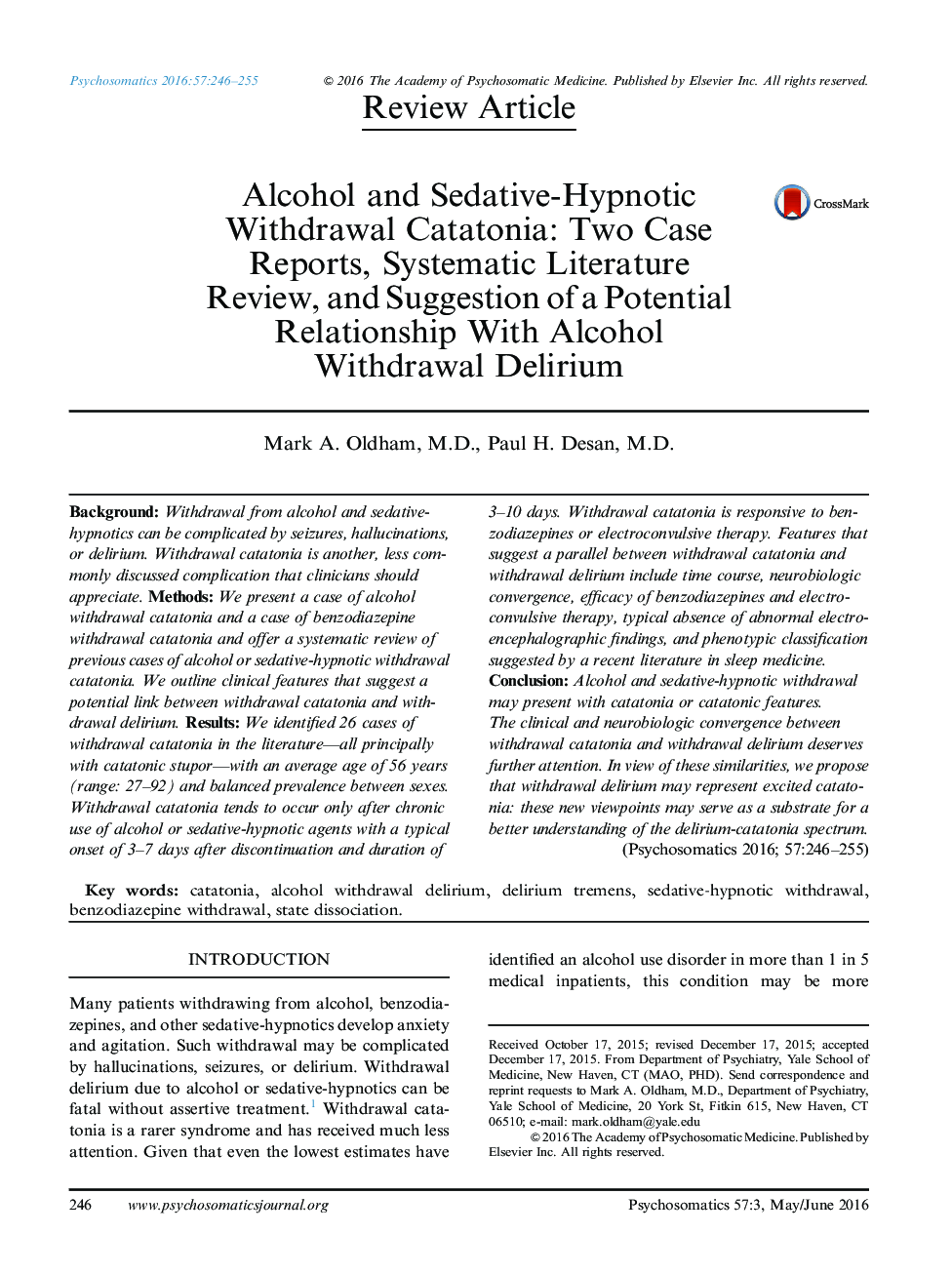| کد مقاله | کد نشریه | سال انتشار | مقاله انگلیسی | نسخه تمام متن |
|---|---|---|---|---|
| 337336 | 547526 | 2016 | 10 صفحه PDF | دانلود رایگان |
BackgroundWithdrawal from alcohol and sedative-hypnotics can be complicated by seizures, hallucinations, or delirium. Withdrawal catatonia is another, less commonly discussed complication that clinicians should appreciate.MethodsWe present a case of alcohol withdrawal catatonia and a case of benzodiazepine withdrawal catatonia and offer a systematic review of previous cases of alcohol or sedative-hypnotic withdrawal catatonia. We outline clinical features that suggest a potential link between withdrawal catatonia and withdrawal delirium.ResultsWe identified 26 cases of withdrawal catatonia in the literature—all principally with catatonic stupor—with an average age of 56 years (range: 27–92) and balanced prevalence between sexes. Withdrawal catatonia tends to occur only after chronic use of alcohol or sedative-hypnotic agents with a typical onset of 3–7 days after discontinuation and duration of 3–10 days. Withdrawal catatonia is responsive to benzodiazepines or electroconvulsive therapy. Features that suggest a parallel between withdrawal catatonia and withdrawal delirium include time course, neurobiologic convergence, efficacy of benzodiazepines and electroconvulsive therapy, typical absence of abnormal electroencephalographic findings, and phenotypic classification suggested by a recent literature in sleep medicine.ConclusionAlcohol and sedative-hypnotic withdrawal may present with catatonia or catatonic features. The clinical and neurobiologic convergence between withdrawal catatonia and withdrawal delirium deserves further attention. In view of these similarities, we propose that withdrawal delirium may represent excited catatonia: these new viewpoints may serve as a substrate for a better understanding of the delirium-catatonia spectrum.
Journal: Psychosomatics - Volume 57, Issue 3, May–June 2016, Pages 246–255
